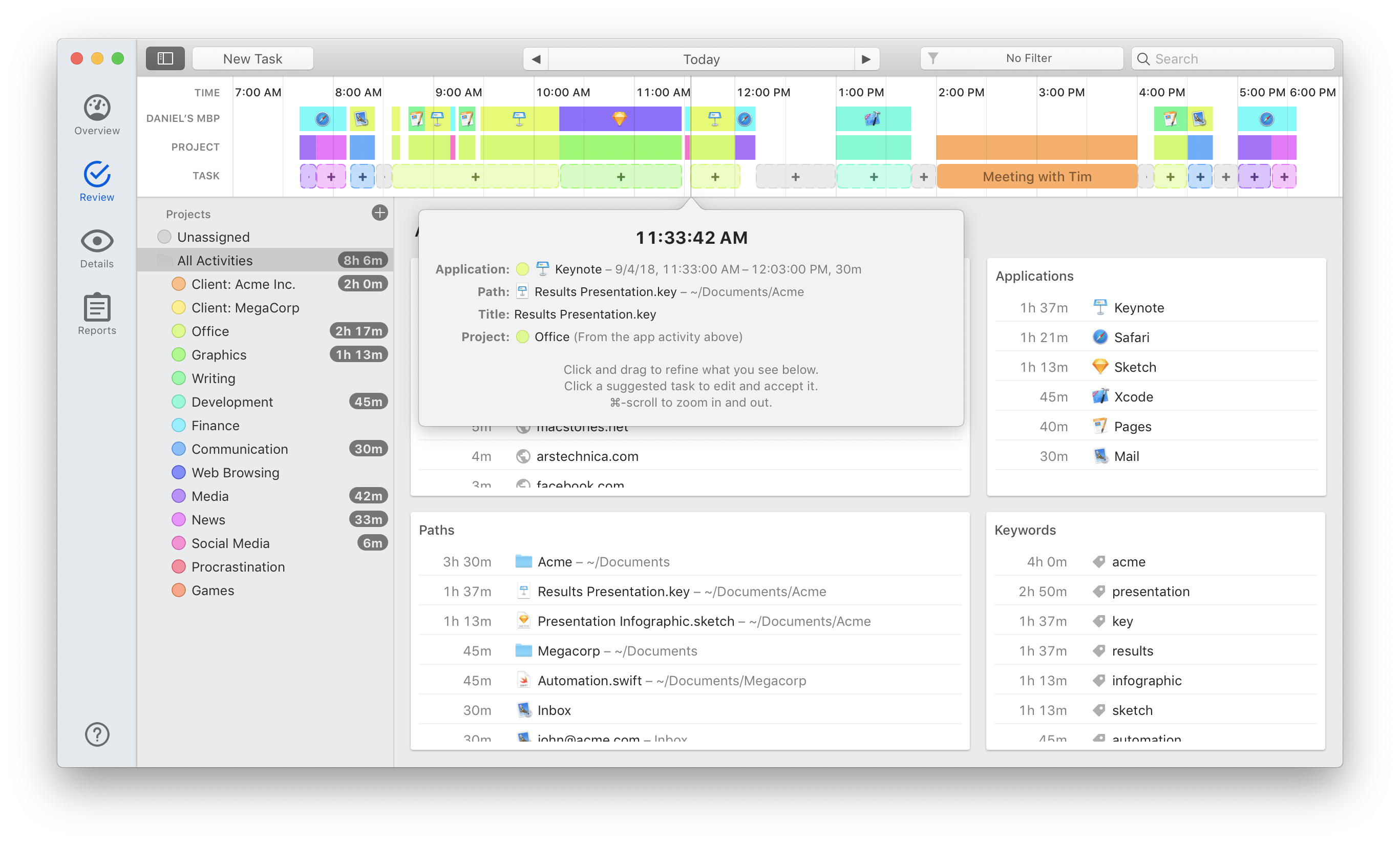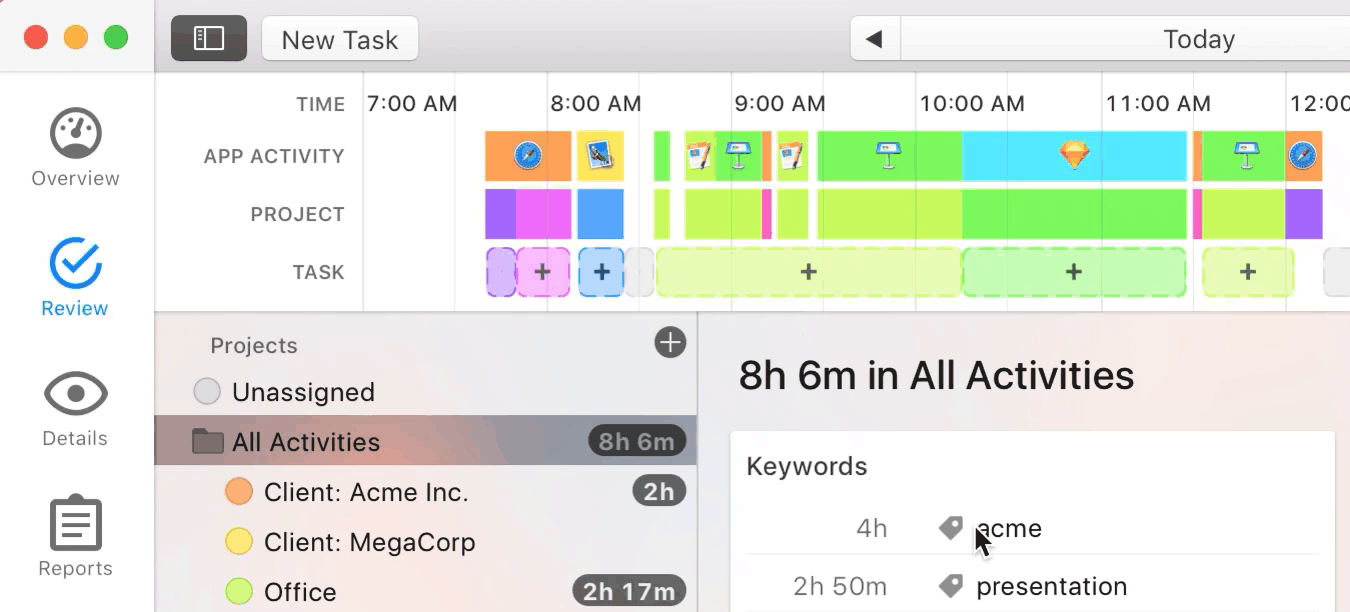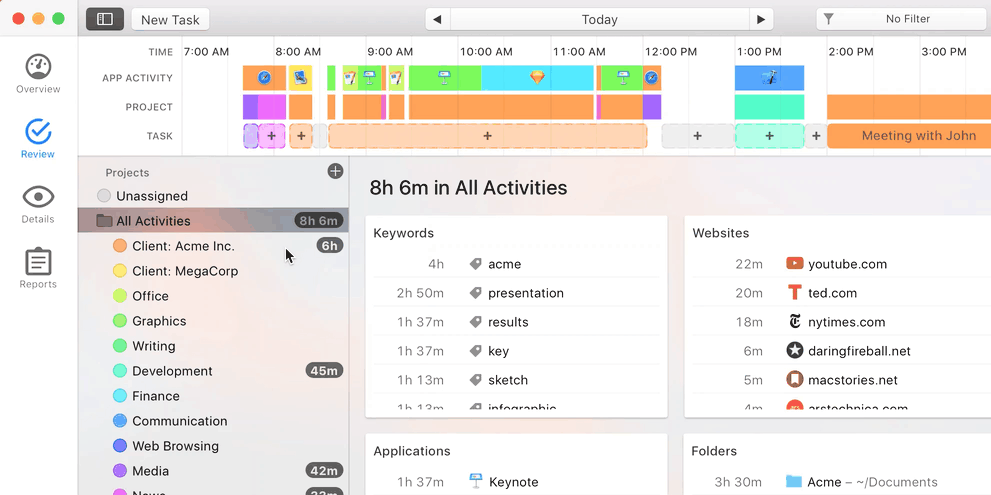Attendance Tracking for Remote Work with Timing: A 3-Step Guide

Tens of millions of people are now working from home as a direct result of the Coronavirus crisis. In fact, some of the largest companies in the world – such as Apple, Google, and Amazon – are asking employees who regularly work in-office to stay home in order to mitigate the spread of the virus, which has had a devastating impact worldwide.
How can employers and employees stay attentive and productive, even in the midst of a crisis?
While we at Timing can’t magically make you more productive, our solution for tracking time and productivity might help get more order into the chaos we are all struggling with these days.
The Challenges of Working Remotely
For freelancers, digital nomads, and remote teams, working from home is standard. They know the drill: Get focused, keep careful track of working hours, and create boundaries.
But for employees accustomed to working in an office – where you’re accountable to staying focused and delivering on time – working at home can become a real challenge.
First, the issue of focus: Typically, an office worker can’t just get up and wander aimlessly about the office, or spend an hour in the break room, or watch Netflix on company time. But if you’re working from home, who’s to know if you spend 30 minutes watching the news, or go to Costco during your working hours?
Then, there’s the opposite problem: Overworking. When you’re not surrounded by others who are on a similar work schedule, you may find yourself losing track of your hours and working overtime. Share on X
Finally, there’s the challenge of tracking your own time when telecommuting. When you’re working in an office, you may not need to show evidence of what you’ve accomplished or how long you’ve spent on various projects or clients. That being the case, you’re probably not accustomed to religiously tracking your time – as you may be required to do when working from home.

All of this, of course, poses a significant challenge for managers: Managing the time and productivity of employees who are working remotely, keeping attendance, and ensuring processes continue to run as smoothly as possible.
The solution?
Attendance tracking using automatic time-tracking.
Timing can help both managers and employees to continue working productively and effectively by automatically tracking, categorizing, and reporting on any and all work-related activities performed during a given day.
Here are three steps for remote workers to get started on automatically tracking their time – and for managers to maintain attendance tracking.
Step 1: Install Timing & Set Up Projects
First, download and install Timing on your Mac. Timing runs offline, so you don’t need to be connected to WiFi for it to function properly. Once you have installed Timing on your Mac, you can also access on your smartphone with a special web app.
Timing will run automatically, so you don’t need to manually capture your working hours. But you do need to accurately “seed” the time-tracking process for Timing to correctly define what you were doing during your working hours.
To do this, go into your “Overview” tab, where you’ll see all your projects listed on the left-hand side. To set up a new project, simply click the “+” button on the project list in the left part of the window. Here’s the important part: In the project editor that shows up, make sure to press the “+” button below the keyword list and enter your project name again there. This ensures that Timing recognizes all activities containing that project name and automatically categorizes them into this project. You can also create additional “Rules” by dragging specific activities onto that project while keeping the option key pressed; rules ensure that similar activities will automatically be assigned to that project in the future.
Step 2: Review Your Work
You can use Timing throughout the day to ensure you remain on task when working from home, but perhaps the most important part of your workday is the end of the day.
At the end of every day, go into your “Review” tab, where you’ll see a detailed breakdown of what you’ve accomplished and when. On the top of the tab, you’ll see a timeline of activities represented by colored blocks, as well as gray areas where no work is detected. We will cover those in a second.

But first, have a look at the four “cards” below the timeline. There, you’ll find your activities broken down in different ways: by keyword, website, application, and folder/path. Here’s a brief overview of how each activity functions:
- Keywords are automatically extracted by Timing from all the words in the window titles and paths it recorded for you. Keywords may include terms that you often research, or the names of particular projects or clients.
- Under Websites you’ll be able to view all domain names visited, as well as how many minutes or hours were spent on each.
- Applications allow you to see how much time you’ve spent on specific applications, such as Microsoft Word, Excel, Adobe, PowerPoint, and more.
- Paths are typically folders or inboxes that Timing identifies as being linked to significant activity. Again, you’ll be able to see how much time you spent on each.
These groupings are super useful to categorize your time: simply drag and drop any of them onto a project listed on the left-hand side. If you’d like to create a rule for the future – as mentioned above – simply keep the option key pressed while dragging and dropping:

Once that’s done, you can circle back to the timeline. There, the colored blocks should already give you a good estimate of what you have been working on when. To fine-tune these assignments, click one of the ‘+’ buttons to add a task. You can optionally enter a title to describe what exactly you have been doing.

Tasks are extremely useful for filing away larger chunks of time, as you may not need to know that you worked for 10 seconds on one app, or spent three minutes on a particular website. But it is helpful to know that you spent three hours working on a website development project, or an hour and a half working on a presentation for a new client.
Ultimately, your end-of-day review lets you know how well you’ve remained on task, where you’ve spent your time, and if/when you got distracted – all critical keys for staying on the ball while working from home.
Step 3: Report Results to Your Manager
To accomplish successful attendance tracking, your managers will want to collect time-tracking results from you at the end of each day or week. Using this valuable information, they can help ensure that everything continues to run smoothly while you work from home.
To effectively report your time-tracking results, go to the “Reports” tab and select “This week” in the date picker in the title bar. Then, select an appropriate report preset, e.g. “Timesheet” or “Weekly snippet”. Timing will automatically generate a detailed report of everything you’ve worked on or accomplished during a given work period.
Finally, select the PDF or Excel export format and click “Export.” Then, email the resulting file to your manager. Congratulations – you’ve officially nailed time-tracking while telecommuting!
Final Thoughts
If you’re feeling stressed and anxious – like much of the world is these days – undergoing significant change to your work environment or schedule probably isn’t helping.
That being the case, using specific tools and strategies – like automatic time-tracking for attendance tracking – can help you remain calm, stay on track, and ride out the crisis with minimal impact to your work. Whether you are an employee, a manager, or a CEO, you may just learn that during a time of upheaval and stress, you learn what’s really possible: keeping detailed track of all working hours, monitoring the productivity of employees, and running a successful business – all remotely. Ultimately, you may find that having employees work from home actually produces greater focus and better workflows. In the meantime, stay safe, wash your hands, and look out for one another!
